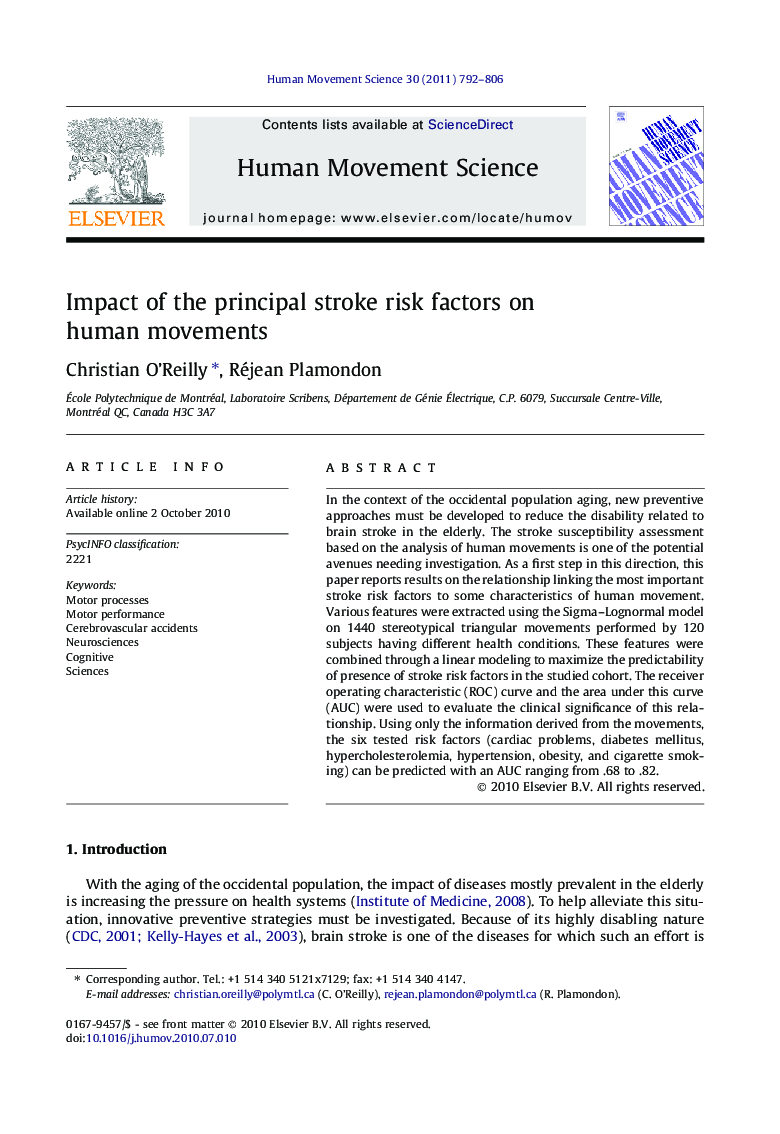| Article ID | Journal | Published Year | Pages | File Type |
|---|---|---|---|---|
| 928577 | Human Movement Science | 2011 | 15 Pages |
In the context of the occidental population aging, new preventive approaches must be developed to reduce the disability related to brain stroke in the elderly. The stroke susceptibility assessment based on the analysis of human movements is one of the potential avenues needing investigation. As a first step in this direction, this paper reports results on the relationship linking the most important stroke risk factors to some characteristics of human movement. Various features were extracted using the Sigma–Lognormal model on 1440 stereotypical triangular movements performed by 120 subjects having different health conditions. These features were combined through a linear modeling to maximize the predictability of presence of stroke risk factors in the studied cohort. The receiver operating characteristic (ROC) curve and the area under this curve (AUC) were used to evaluate the clinical significance of this relationship. Using only the information derived from the movements, the six tested risk factors (cardiac problems, diabetes mellitus, hypercholesterolemia, hypertension, obesity, and cigarette smoking) can be predicted with an AUC ranging from .68 to .82.
